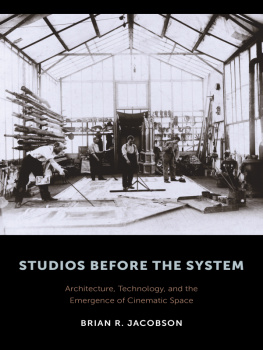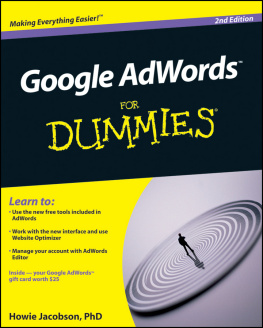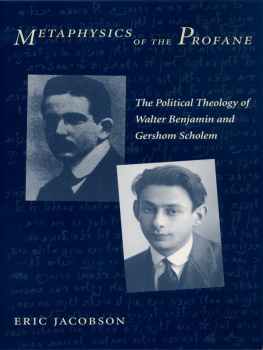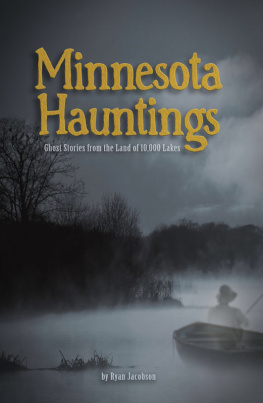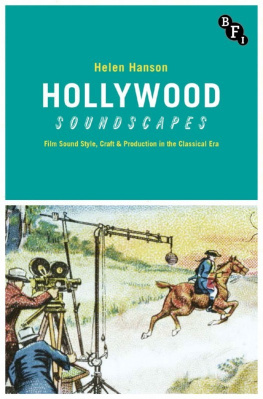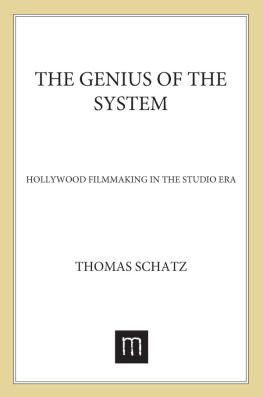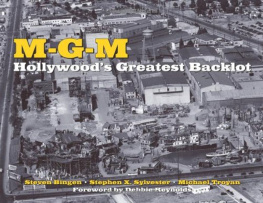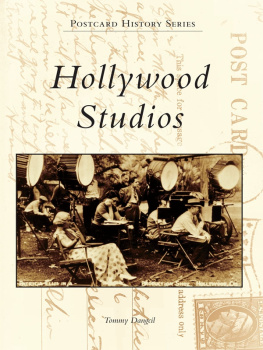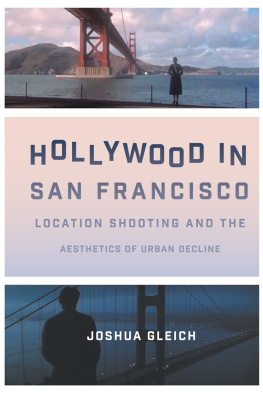STUDIOS BEFORE THE SYSTEM
FILM AND CULTURE
JOHN BELTON, EDITOR
FILM AND CULTURE
A series of Columbia University Press
EDITED BY JOHN BELTON
For the list of titles in this series, see
STUDIOS BEFORE THE SYSTEM
Architecture, Technology, and the Emergence of Cinematic Space
BRIAN R. JACOBSON
Columbia University Press
New York
Columbia University Press
Publishers Since 1893
New York Chichester, West Sussex
cup.columbia.edu
Copyright 2015 Columbia University Press
All rights reserved
E-ISBN 978-0-231-53966-1
Library of Congress Cataloging-in-Publication Data
Jacobson, Brian R.
Studios before the system : architecture, technology, and the emergence of cinematic space / Brian R. Jacobson.
pages cm.(Film and culture)
Includes bibliographical references and index.
ISBN 978-0-231-17280-6 (cloth : alk. paper) ISBN 978-0-231-17281-3 (pbk : alk. paper) ISBN 978-0-231-53966-1 (ebook)
1. Motion picture studiosUnited StatesHistory20th century. 2. Motion picture industryHistory20th century. I. Title.
PN1993.5.U6J225 2015
384'.809730904dc23
2015007610
A Columbia University Press E-book.
CUP would be pleased to hear about your reading experience with this e-book at .
Cover and book design: Lisa Hamm
Cover image: Cinmathque franaise, Bibliothque du film, Service Iconographique
References to websites (URLs) were accurate at the time of writing. Neither the author nor Columbia University Press is responsible for URLs that may have expired or changed since the manuscript was prepared.
TO MY PARENTS
CONTENTS
THIS BOOK BEGAN at the University of Southern California, where I was fortunate to study under the direction of two inimitable scholars and mentors, Vanessa Schwartz and Anne Friedberg. I want to thank Vanessa, first and foremost, for her unwavering dedication to the project in all its phases. She encouraged my turn to the history of technology and to all things French, and she has pushed my work to greater heights by being both its fiercest supporter and, just as importantly, one of its toughest critics. I first recognized that I had an idea for a book like this during a conversation about architecture with Anne at the California Science Center in the spring of 2007. With some trepidation, I proposed an architectural history of the Black Maria. Ill never forget Annes enthusiastic response; I only wish I could see her reaction to the book it became.
I am indebted to many others for their support and contributions. At USC, Akira Mizuta Lippit, Priya Jaikumar, and Steve Ross offered generous feedback. Valuable advice and encouragement at conferences and other presentations came from Jonathan Auerbach, Ed Dimendberg, Noam Elcott, Phil Ethington, Jane Gaines, Saverio Giovacchini, Anne Higonnet, Kara Keeling, Rob King, Brian Larkin, Richard Meyer, Vivian Sobchack, and Kristen Whissel. At Oklahoma State University and the University of St Andrews, I received generous support from my colleagues, especially Jeff Menne and Tom Rice who read portions of the manuscript in progress.
It has been a pleasure to work with the team at Columbia University Press. I would like to thank Jennifer Crewe and John Belton for taking an interest in my project; the anonymous reviewers for their close attention to the manuscript and valuable feedback; Roy Thomas for his impeccable work and guidance; and Kathryn Schell for steering me through the process.
Many archivists and librarians provided invaluable assistance during my research. I am thankful for the support of the teams at the Bibliothque du film, the Muse Gaumont, the Archives de Paris, the Fondation Jrme Seydoux-Path, the Bibliothque historique de la ville de Paris, the Thomas Edison National Historical Park, the Museum of Modern Art Film Study Center, the Margaret Herrick Library, the Bronx Department of Buildings, and the Los Angeles Department of Building and Safety. For their exceptional generosity, I thank Rgis Robert and Karine Mauduit at the Bibliothque du film, Mlanie Herick at the Muse Gaumont, Paul Israel at the Thomas A. Edison Papers Project, and Leonard DeGraaf at the Thomas Edison National Historical Park.
Funding from numerous institutions helped make this book possible. A Fulbright Fellowship allowed me to conduct research in Paris. The Social Science Research Councils International Dissertation Research Fellowship and Dissertation Proposal Development Fellowship, both with funds from the Andrew W. Mellon Foundation, supported research in France and the UK.
include revised portions of essays first published in History and Technology 27.2 (Routledge, 2011) and Early Popular Visual Culture 8.2 (Routledge, 2010).
Ive had the good fortune and great pleasure to research and write this book in a community of supportive friends and colleagues. Very special thanks go to James Leo Cahill, Ryan Linkof, Raphaelle Steinzig, Mike Godwin, Erin Sullivan, Joel Maynes, Brian Adam Smith, Anderson Blanton, Seth Wood, Ariel Ross, Michael Boaz, and Amy Wallace. My familys unfailing support and love made this book possible. I dedicate it to my parents.
Finally, thanks beyond words go to Catherine Clark, whose knowledge, wit, and keen eye have shaped every page. Our walks and runs, endless puns, (just enough) apros, and (not quite enough) adventures have kept me going. Ready? On y va!
Since the dawn of history men have built cities, some for refuge, some for defense and some for habitation, but never before in the history of the world has a city been built expressly for the purpose of making amusement for the rest of the world. It is the magic city of make-believe and one never knows, as they stroll about the streets of this city, whether they are looking at the real or unreal.
The Facts and Figures About Universal City (1915)
BY THE TIME Universal Pictures opened its studio city to curious visitors in 1915, the film studio had become a well-known, if still tantalizingly mysterious, site of cultural production. Universals magic city of make-believe, as promotional materials described it, represented only the largest version of the hundreds of studios found across the United States and Europe. As advertisements suggested, the tourists who traversed its backlot sets on guided tours found unreal city streets bearing the innumerable signs of reality that had become studio cinemas stock-in-trade. Like film viewers, Universals visitors traveled from Old Western towns to New York City streets and from ancient Greek agoras to Chinese pagodas with the immediacy of a film cut. Cinemas impossible on-screen voyages, the tour revealed, had tangible counterparts in studio-made cities.
To movie-savvy visitors, this likely came as no great surprise. The popular and trade press had made basic knowledge of studio cinema a banality of the growing film industry, and studio tours only reinforced many audience members assumptions about the real places that produced films unreal spaces. In only two short decades, the film studio had already become an assumed feature ofand actively disavowed necessity forillusionary forms of cinematic representation. But as contemporary observers made clear, to disregard the studio was to miss something profoundly unsettling about cinematic reproduction. Reflecting on the eerie strangeness of the studios artificial worlds after a tour of Germanys Ufa studios in 1926, Siegfried Kracauer wrote:

